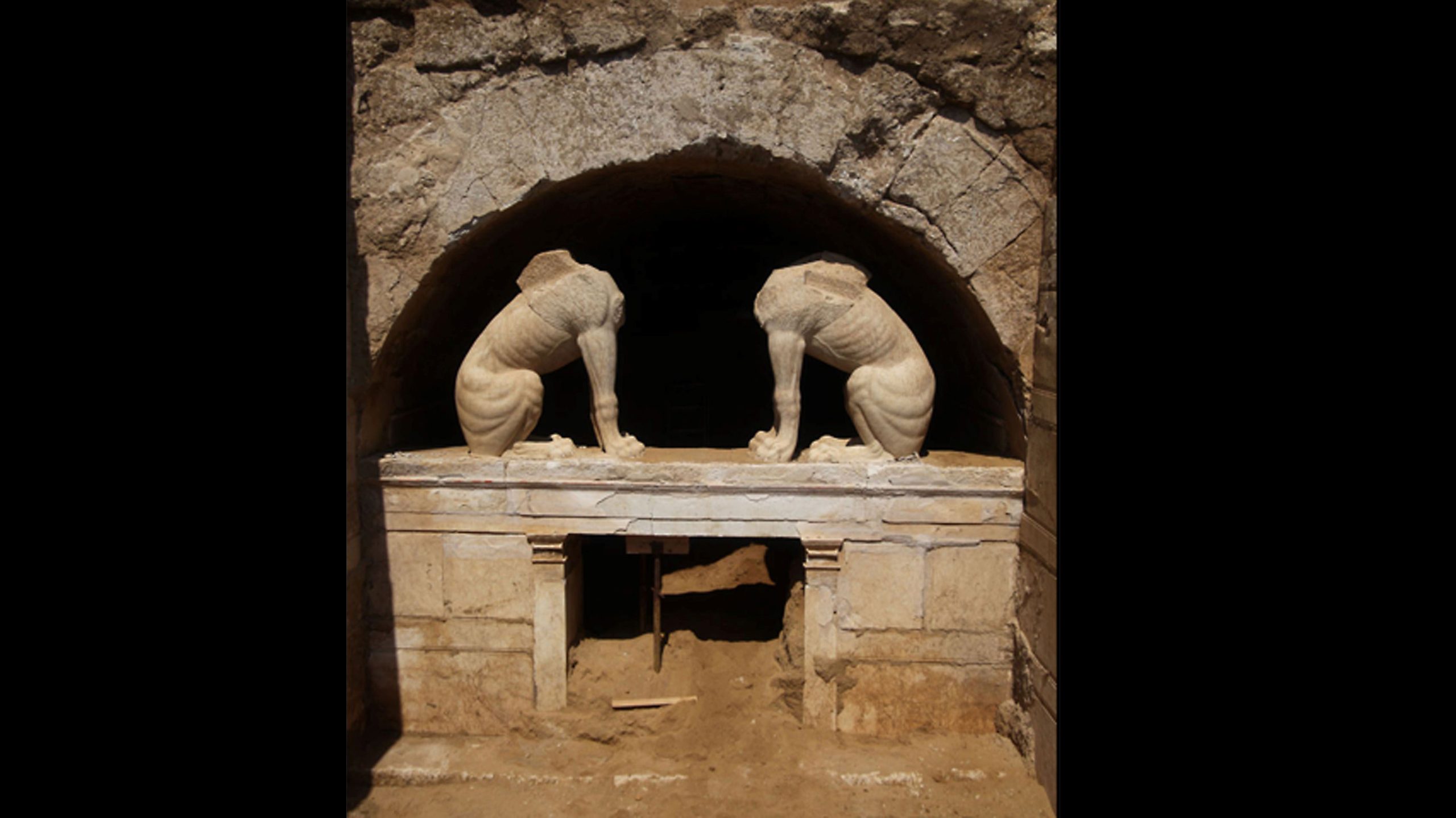A new theory on who was buried in the Kasta Tomb in ancient Amphipolis has been proposed by Aristotle University of Thessaloniki Professor Emeritus Ioannis Mouratidis.
The Professor of History and the Philosophy of Physical Education and Sports argues that the tomb was actually the final resting place of Damasias of Amphipolis, the winner of the Stadion running race at the 320 BC Olympics. Almost nothing is known about the ancient Olympian except that he was victorious in the Games. Mouratidis’ theory is based on the painted decoration on the tomb’s architraves, which portrays sporting events. Other archaeologists corroborate his interpretation, with one commenting that “The forms and symbols we see on the columns allude to the victories of the deceased.” The depiction of trophies including tripods, coupled with the figure of Nike (Winged Victory) on the columns, add weight to his theory.
Several archaeologists have proposed theories down the years about who was buried in the tomb, some or which are more likely than others. Still, despite the diverging opinions, the experts all agree that the tumulus dates from last quarter of the 4th century BC, and that, given the grandiose nature of his last resting place, the deceased must have been a person of considerable importance—a general, politician, or an aristocrat. Indeed, there has even been speculation that he could have been one of Alexander the Great’s generals.
Nevertheless, Mouratidis rejects this assumption on the grounds that no one matching that description has ever been recorded as participating—let alone winning—such an important sporting event.
Mouratidis also argues that winners of Panhellenic tournaments, and the Olympics in particular, were held in such high regard by the ancient Greeks that even generals and politicians would have been envious of the champions. Even after their death, human and divine laws would have condemned the failure to honor and remember them properly, viewing such an omission as an act of ingratitude punishable by the Gods. That no such event is mentioned in the sources further strengthens the theory that the tomb in question really is Damasias of Amphipolis’ final resting place.



